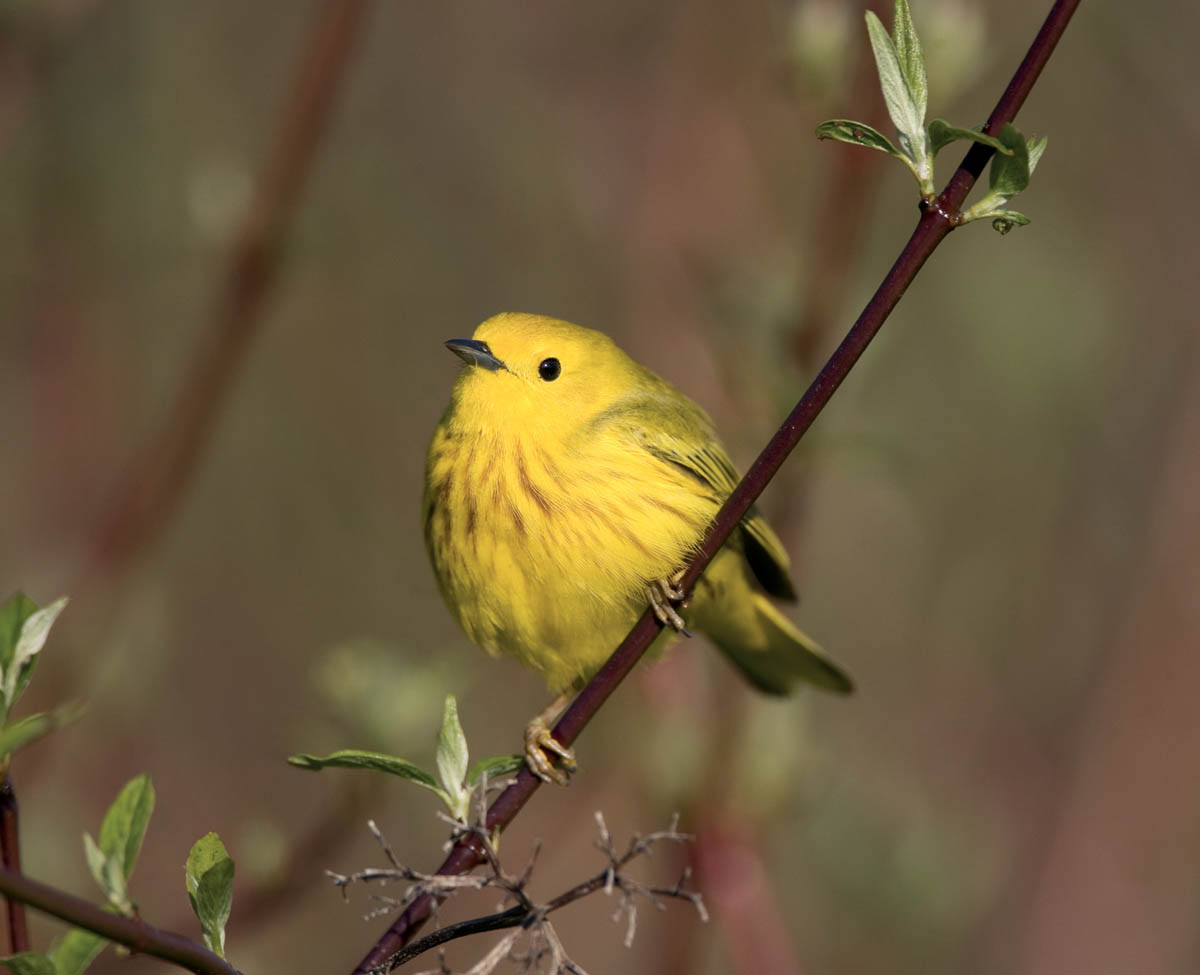
Yellow Warbler male
North America is home to more than 50 species of wood warblers: small, colorful songbirds that generally winter in Central and South America. Some are rare with extremely localized ranges; others are widespread. The Yellow Warbler has the largest year-round geographical range and the largest North American breeding range, found at least seasonally throughout almost all of the United States and Canada down to northern South America.

Yellow Warbler male
Although found in many habitats, Yellow Warblers are most associated with willows or, in the tropics, mangroves. They nest in willow thickets along streams and in wetlands, and in shrubby field edges, power-line cuts, and other areas with dense low shrubbery. Since they feed almost entirely on insects, they fly north only after ice clears and trees begin leafing out, when emerging aquatic insects and caterpillars grow suddenly abundant.
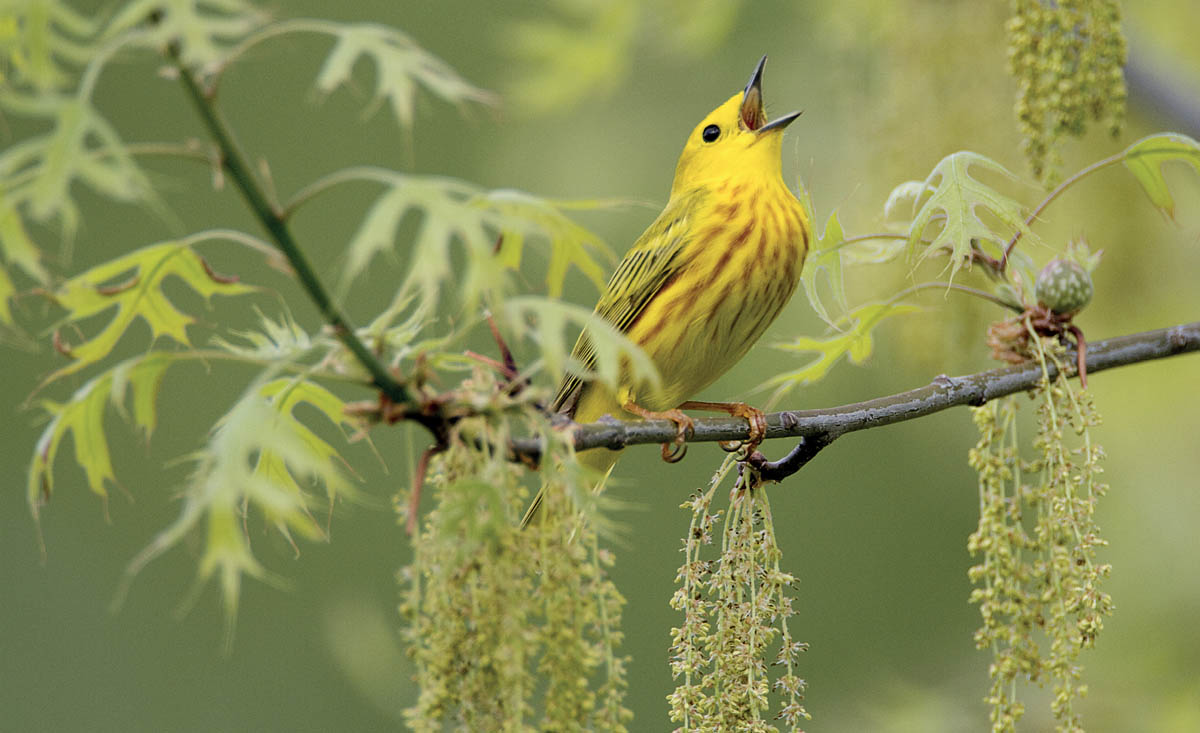
A male Yellow Warbler sings his song, often transcribed as sweet, sweet, sweet, I’m so sweet, to claim a territory and attract potential mates. On spring mornings, as early as an hour before sunrise, he may repeat the song 10 times per minute. Yellow Warblers occasionally sing in flight.
Like many territorial birds, male Yellow Warblers defend their territories against other males with song, chases, and, as a final resort, brief fights. The more chestnut streaking on a male, the more aggressively he defends his territory.
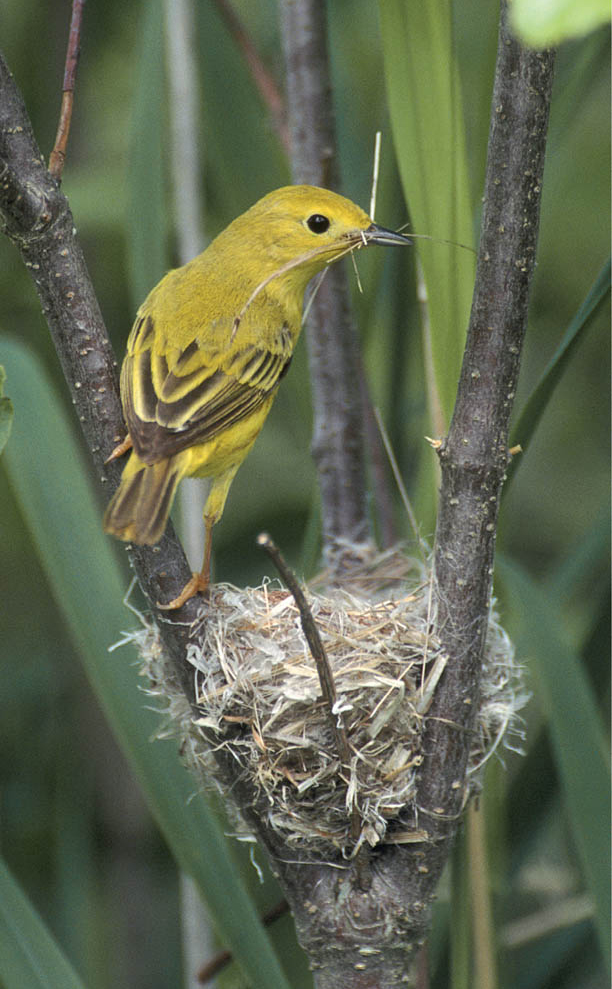
A female Yellow Warbler brings a beakful of fine grasses for her nest, 3 to 10 feet above the ground, in a vertical fork of a shrub. She started with a deep cup of grasses, fine bark strips, and other plant fibers, binding the materials together with spiderwebs and securing the nest to support-ing twigs.
When females arrive, males have already staked their claims on territories, which are small, often less than half an acre, and invariably contain at least one stand of willows or alders. A territory may lack important resources, such as drinking water, so Yellow Warblers occasionally wander more than a third of a mile to meet these needs.
When the first males arrive in spring, while recovering from the rigors of migration and before females and many rival males are present, they may sing sporadically, shortening or even skipping their dawn singing bouts. As the nesting period approaches, those early morning bouts get longer, more frequent, and more robust, and by the time a male’s nest contains eggs and nestlings, he may sing the dawn song each day for 30 to 45 minutes without a break.
When a female enters his territory, he’s likely to chase her on and off for a few days. Once she pairs with him, she’ll start building the nest. As the nest grows, she starts soliciting mating by crouching, quivering her wings, and calling softly.
The nest is a lovely structure, made from grasses, strips of bark, and fine fibers. When set in a deep fork in a tree, the nest may be deep, too. If it contains no cowbird eggs (see box), the nest typically contains four to five eggs laid at 24-hour intervals, usually soon after sunrise. The female has a brood patch and does all the incubation, often beginning a day or so before the clutch is complete. In one case, brooding periods during the day lasted about 22 minutes, and the time off the eggs about five minutes. The male occasionally brings the female food during incubation.
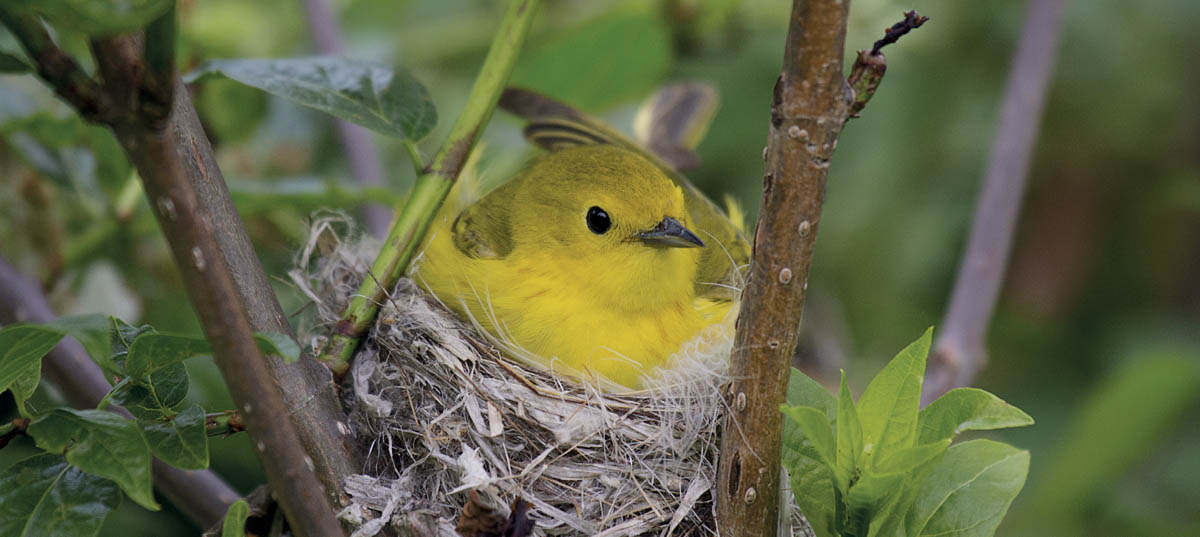
The female Yellow Warbler incubates her eggs for 10 to 13 days. During this time, her mate sometimes brings food to her. The female also broods the young and may shade them in the heat of midday.
Brown-headed Cowbirds frequently lay their eggs in Yellow Warbler nests. The Yellow Warbler is one of only a few species that can recognize cowbird eggs, but its bill is too small and weak to eject them. Instead, if they have fewer than two of their own eggs in the nest, the pair will often build a new floor on top, burying the cowbird egg along with any of their own eggs, and start a new clutch. One Yellow Warbler nest consisted of six floors, with at least one cowbird egg sandwiched within each layer.
The eggs hatch in about 11 or 12 days; the interval between first and last can be a day or two. The helpless nestlings can do little but open their mouths at first but are fed by both parents and grow and develop quickly. Their eyes open when they are about three days old, and they fledge eight to ten days after hatching. By that time, each parent may make up to 16 feeding trips per hour throughout the day to satisfy their hungry offspring. Yellow Warblers raise only one brood per year.
3 days old. Four Yellow Warbler nestlings beg to be fed, each colorful gape a red mouth lining edged with yellow flanges. They hatch naked, except for sparse tufts of light gray down, and with eyes closed. At three days old their dark wing feathers are still encased in their sheaths, and dark feather tracts are visible along their backs.
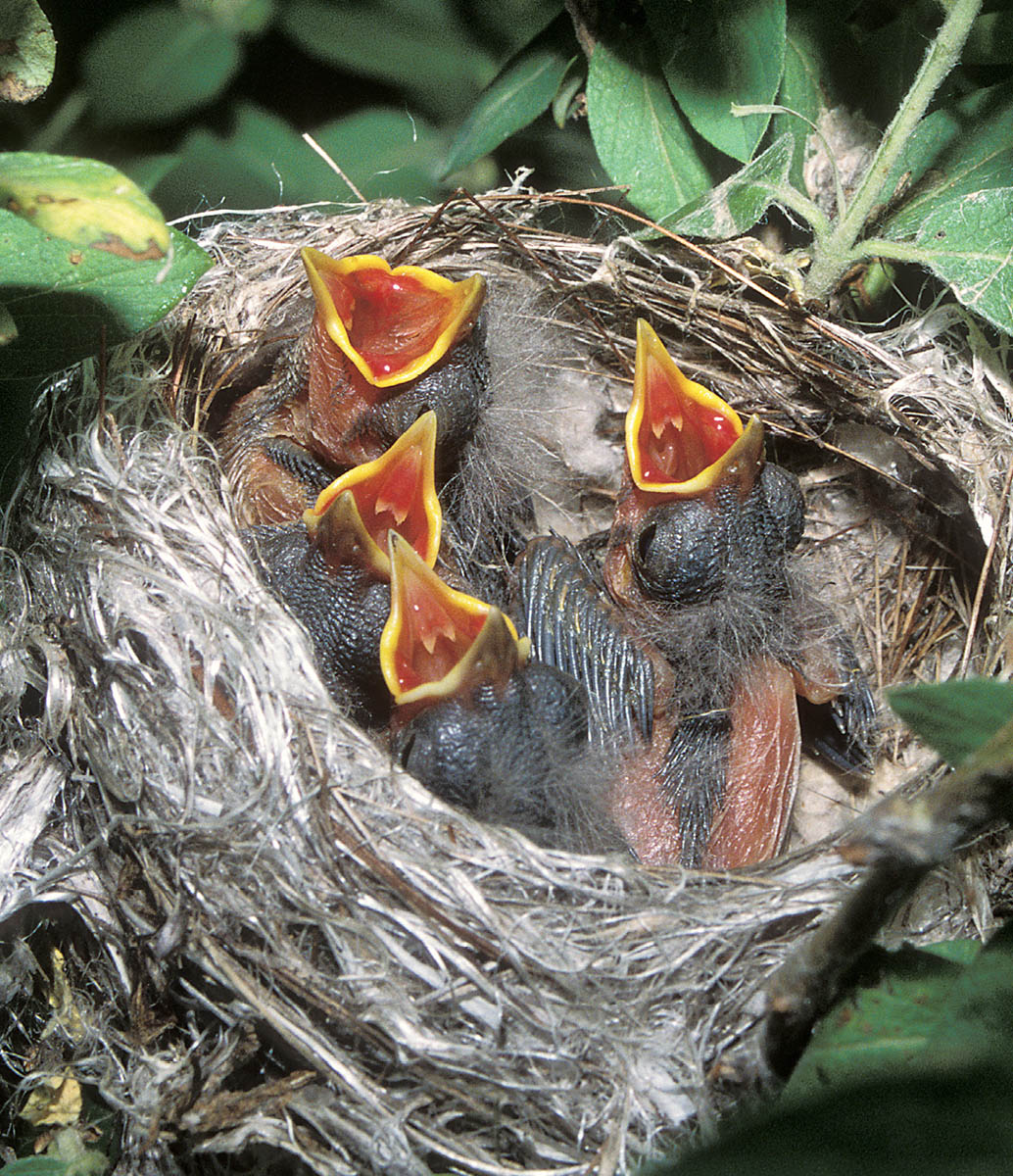
Almost fledged. Both parents feed the young a diet of insects and spiders. With their feathered crowns and partly developed wing feathers, these young are almost old enough to leave the nest.
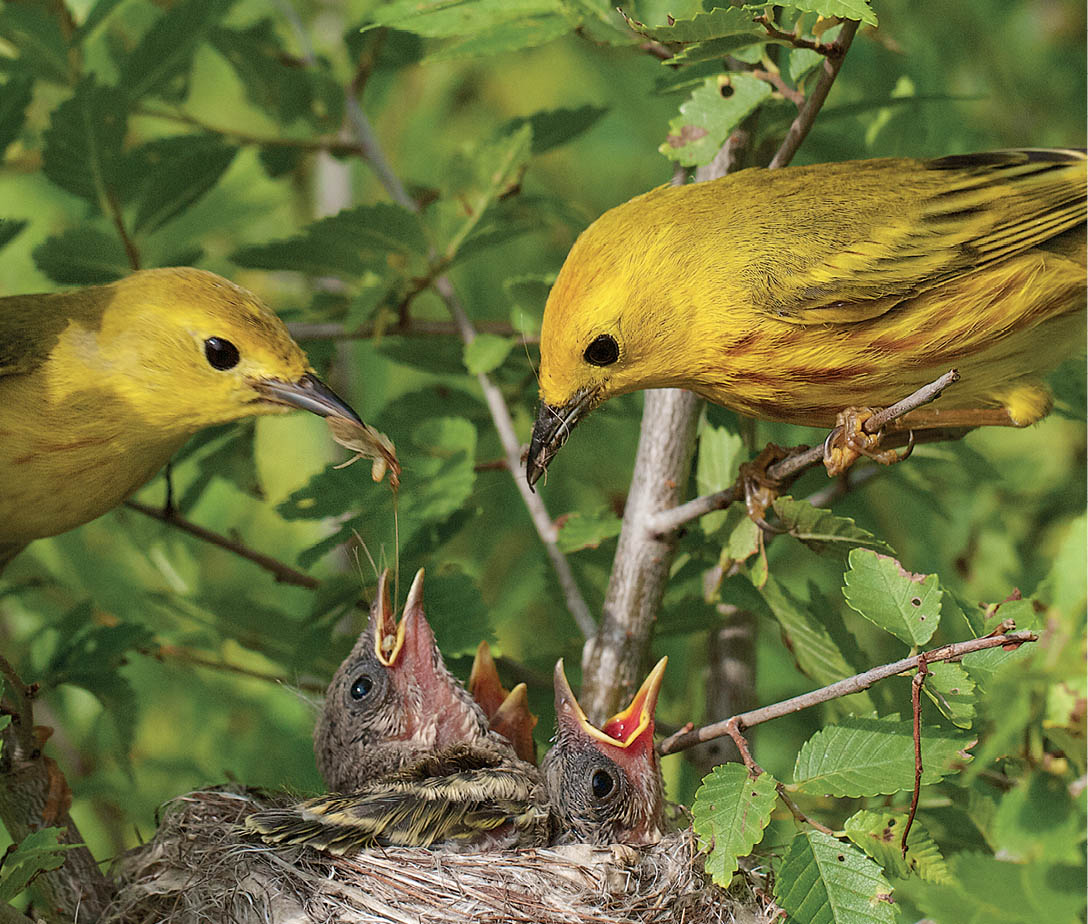
Researchers have trouble keeping track of active, tiny birds after they scatter from their nests, but observations suggest that at least some Yellow Warbler fledglings remain with their parents for 17 days or more after leaving the nest. These warblers leave their breeding grounds on migration earlier than most species, and are quiet and fairly furtive, seldom observed after chicks fledge. But we’ll see Yellow Warblers the following spring: that we can count on.
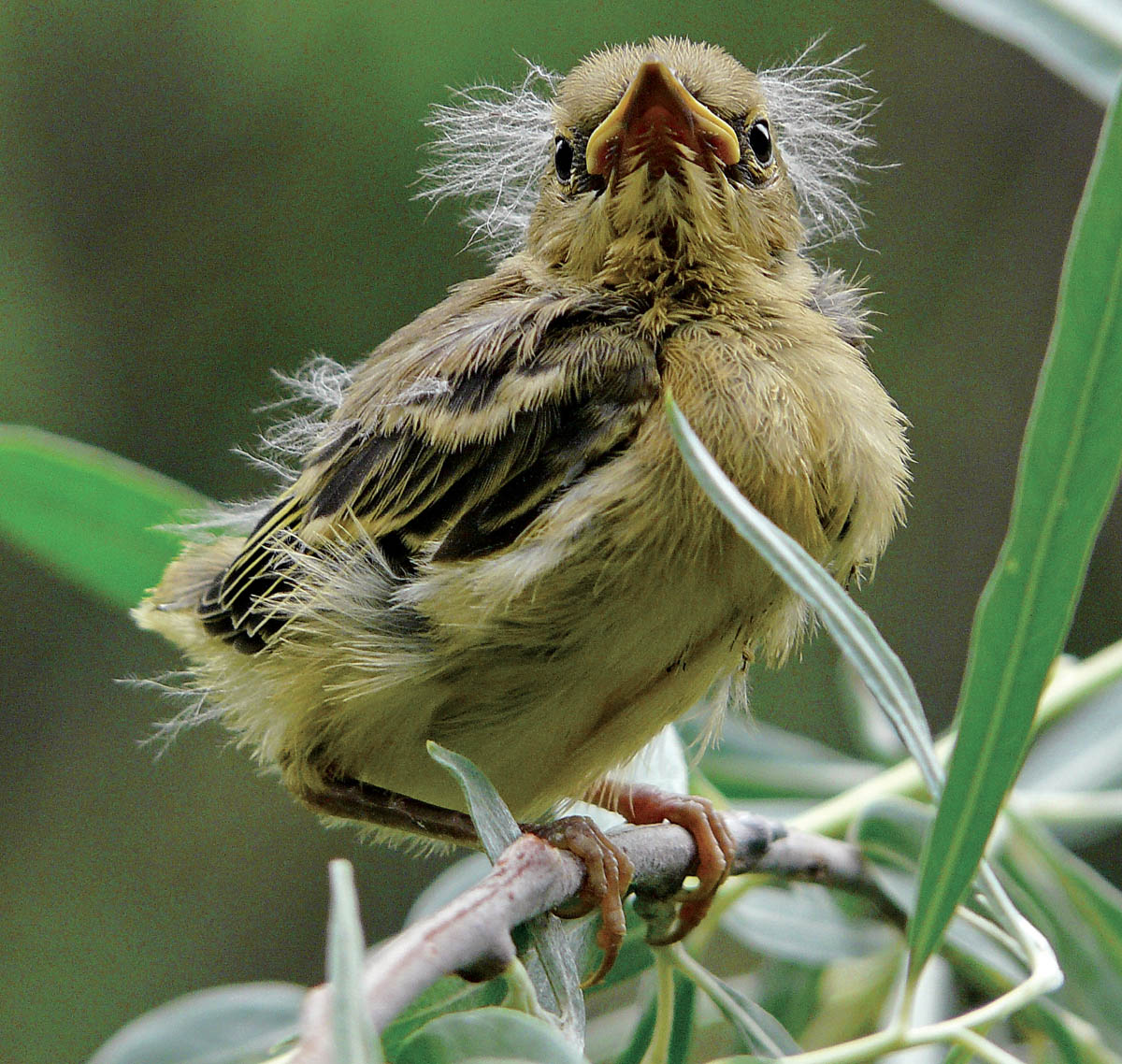
This Yellow Warbler fledgling still has tufts of natal down on its head and scattered across its back, and its tail seems almost non-existent, but it has quite well-developed wing feathers. This fledgling may stay with its parents for up to three weeks after it leaves the nest.
Yellow Warblers have two song types. Type I, often transcribed as sweet, sweet, sweet, I’m so sweet, is used primarily to attract a mate. A male sings this less often as nesting begins, except as he approaches the nest to feed nestlings. Type II, not as easily transcribed, occurs primarily in male-to-male communications — during dawn singing bouts, in encounters with other males, and in spontaneous daytime singing after mate selection.